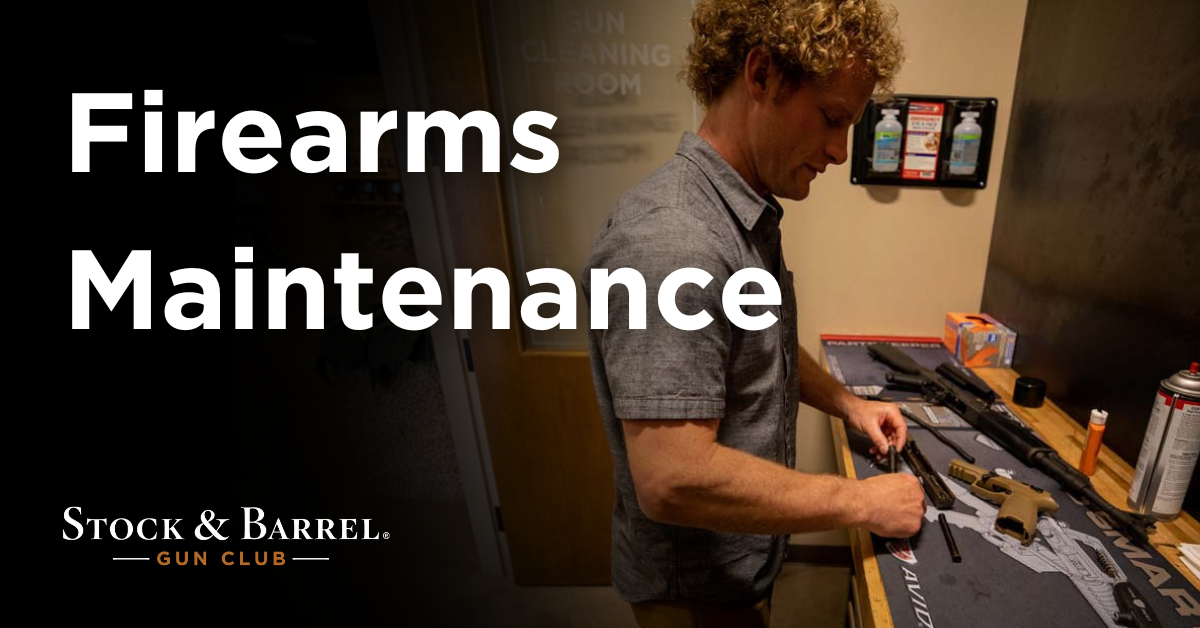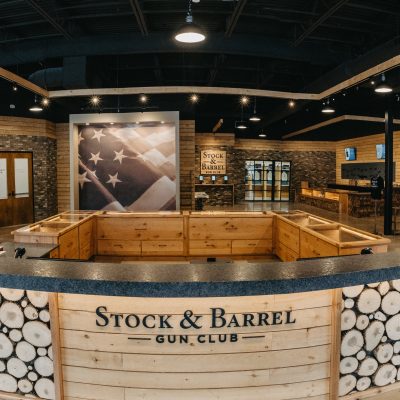Hot days, humid evenings, rainstorms, and high winds are all part-and-parcel to the summer season. For many, this is a time to maximize time spent outdoors – this includes time on the shooting range. At a time when weather is a little more extreme and our guns get shot a little bit more, it seemed like a good time to talk about cleaning. How much cleaning is necessary, and what should you do?
MAINTENANCE INTERVALS
The easiest way to figure out when to clean your gun is to set a fixed interval. This can be based on time or round-count, depending upon how much you shoot and how easily you’re able to track usage. If your range sessions are short, or you keep written records of rounds fired, you may want to consider baseline maintenance every 500 rounds, or every 1,000 rounds, or whatever interval you’re most comfortable with. The other way to schedule maintenance is time based. This may be easier for high-volume shooters than trying to count bullets every range session. If you are an active competitor or take a lot of courses, it may be easier to schedule a cleaning day once per month, or once per quarter. For the majority of modern commercial firearms, it is not necessary to clean them after every range session.
Many people think that their firearms need to be white-glove clean. While some guns are more sensitive than others to dirt, debris, and carbon build-up, this is generally not the case. If there is still some carbon residue on the inside of your gun, it’s not the end of the world. There are, however, some things you do need to pay extra attention to, or make sure you are doing, with each maintenance session.
KEY POINTS
There are some simple-yet-key things to keep an eye out for when inspecting your firearm post-range-trip, or for seasonal maintenance. Perhaps first and foremost, inspect the inner surface of the barrel. Unload your firearm and point it directly at a light source (so long as that is in a safe direction) or insert a bore light into the muzzle. DO NOT look into the muzzle end of your firearm. Always inspect your barrel in the same direction the bullet would travel – from the chamber looking towards the muzzle. This will be the same way you clean. Whether using a bore snake or traditional cleaning rod with patch puller, you always want the cleaning surface to travel in the same direction as a bullet would. Do not use a back-and-forth scrubbing or wiping motion when cleaning a barrel. Once the barrel is clean, inspect for anything that looks like hard build-up, gouges, scratches, or flat spots. The rifling should be even and consistent down the length of the barrel.
Clean the key parts that move or support movement. On semi-automatic pistols, think of the frame rails, that the slide moves back and forth on. For modern sporting rifles, this is the bolt carrier group (BCG) and charging handle. If in doubt, consult the manual for your specific firearm, which will likely include instructions on disassembly as well as suggested cleaning/lubrication points. If you don’t have a manual, or your manual doesn’t have enough information, there are other places you can go, like owners’ groups on social media, internet forums, or asking the staff at your local range or firearms dealer.
CHEMICALS
There are dozens of gun-specific lubricants out there. Every single one claims to be the best, and to have some kind of secret, critical blend of chemicals to make it superior to all others. Then there are folks who will turn around and tell you to use vegetable oil or motor oil. Separate from these are solvents, bore scrubs, and combo products like CLP – which claims to Clean, Lubricate, and Protect.
While we encourage you to do your own research, do so knowing that the vast majority of “research” or “data” you will come across in regard to lubricants is either dressed-up marketing, staunch opinion, or paid hype. There is, generally, very little functional difference between individual brands of firearm lubricant. If you shoot or store guns in below-freezing temperatures, a thicker or heavier lube is recommended. In hot or dry, dusty environments, those thicker gooier lubes will be a magnet for dust and turn into gritty paste. So thinner oils are a little better for desert environments. While you don’t want your gun dripping in oil, don’t be afraid to apply liberally, particularly on moving parts that will see hard use. (About to take your AR-15 to a 1,000-round tactical course? Lube that BCG liberally.) Parts that are lubricated prior to shooting will be easier to clean, but we do recommend using a separate, dedicated solvent to break down carbon residue before wiping it off. Once you’ve cleaned the firearm to your satisfaction, lubricate it with a dedicated oil. Combination formulas are okay at everything but not great at anything.
CONCLUSION
There are a wide variety of opinions and guidelines about how often, and how thoroughly, you should clean and lubricate your firearms. In our experience, the bare essentials are making sure the barrel is clean and clear, and making sure the moving parts are sufficiently clean and lubricated to cycle properly. If you’re in a high moisture environment, keep an eye out for rust or corrosion. If you’re in a dry, dusty environment, watch for dust and dirt build-up. Otherwise, inspect your guns before use, disassemble and clean at reasonable intervals for your use conditions, and use the good weather to get out and shoot!
You May Also Be Interested In These Classes…
-
Clearing Handgun Malfunctions in Chanhasssen and Eagan
-
Modern Handgun Maintenance in Chanhasssen and Eagan
-
AR15 Maintenance in Chanhasssen and Eagan





